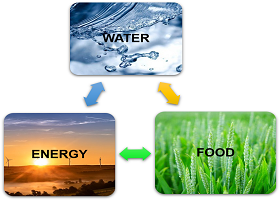- 3.3Impact Factor
- 7.7CiteScore
- 18 daysTime to First Decision
Water-Food-Energy Nexus for Sustainable Development
This special issue belongs to the section “Sustainable Chemical Engineering and Technology“.
Special Issue Information
Dear Colleagues,
The water–food–energy nexus is essential for sustainable development. An increasing global population; industrialization; and fluctuations in economic growth have upset the security of all three of these vital domains of life. The agricultural sector is the epicenter of food production for over 60 percent of world’s population, who rely on it for their subsistence. Furthermore, successful agriculture consumes the largest amount of fresh water and around a quarter of global energy. Hence, it is important to find a suitable balance or an integrated approach regarding these three critical domains to guarantee enough food and energy production without leading to water shortage worldwide.
The focus of this Special Issue is to publish original, in-depth research papers and short reviews addressing the recent progress in the area of the water–food–energy nexus for sustainable development using the biomaterials. The Special Issue will cover topics where fundamental research is being conducted on biomaterials, especially related to natural polymers and their nanoforms (e.g., cellulose, nanocellulose, chitin, guar gum, protein, and amino acid), applied to food-, water-, and energy-related areas. Specifically, it will include advanced applications such as water purification, composite materials, energy storage, membranes, bioscaffolds, sensing materials, and food production.
Original research papers related to the above topics, comprising innovative methods, advanced structural characterization, practical solutions, and the current state of emerging technologies in the field, are highly encouraged.
Dr. Priyanka Sharma
Dr. Sunil Kumar Sharma
Guest Editors
Manuscript Submission Information
Manuscripts should be submitted online at www.mdpi.com by registering and logging in to this website. Once you are registered, click here to go to the submission form. Manuscripts can be submitted until the deadline. All submissions that pass pre-check are peer-reviewed. Accepted papers will be published continuously in the journal (as soon as accepted) and will be listed together on the special issue website. Research articles, review articles as well as short communications are invited. For planned papers, a title and short abstract (about 250 words) can be sent to the Editorial Office for assessment.
Submitted manuscripts should not have been published previously, nor be under consideration for publication elsewhere (except conference proceedings papers). All manuscripts are thoroughly refereed through a single-blind peer-review process. A guide for authors and other relevant information for submission of manuscripts is available on the Instructions for Authors page. Sustainability is an international peer-reviewed open access semimonthly journal published by MDPI.
Please visit the Instructions for Authors page before submitting a manuscript. The Article Processing Charge (APC) for publication in this open access journal is 2400 CHF (Swiss Francs). Submitted papers should be well formatted and use good English. Authors may use MDPI's English editing service prior to publication or during author revisions.
Keywords
- biomaterials
- water
- energy
- food
- sustainable development
- biopolymers

Benefits of Publishing in a Special Issue
- Ease of navigation: Grouping papers by topic helps scholars navigate broad scope journals more efficiently.
- Greater discoverability: Special Issues support the reach and impact of scientific research. Articles in Special Issues are more discoverable and cited more frequently.
- Expansion of research network: Special Issues facilitate connections among authors, fostering scientific collaborations.
- External promotion: Articles in Special Issues are often promoted through the journal's social media, increasing their visibility.
- e-Book format: Special Issues with more than 10 articles can be published as dedicated e-books, ensuring wide and rapid dissemination.

